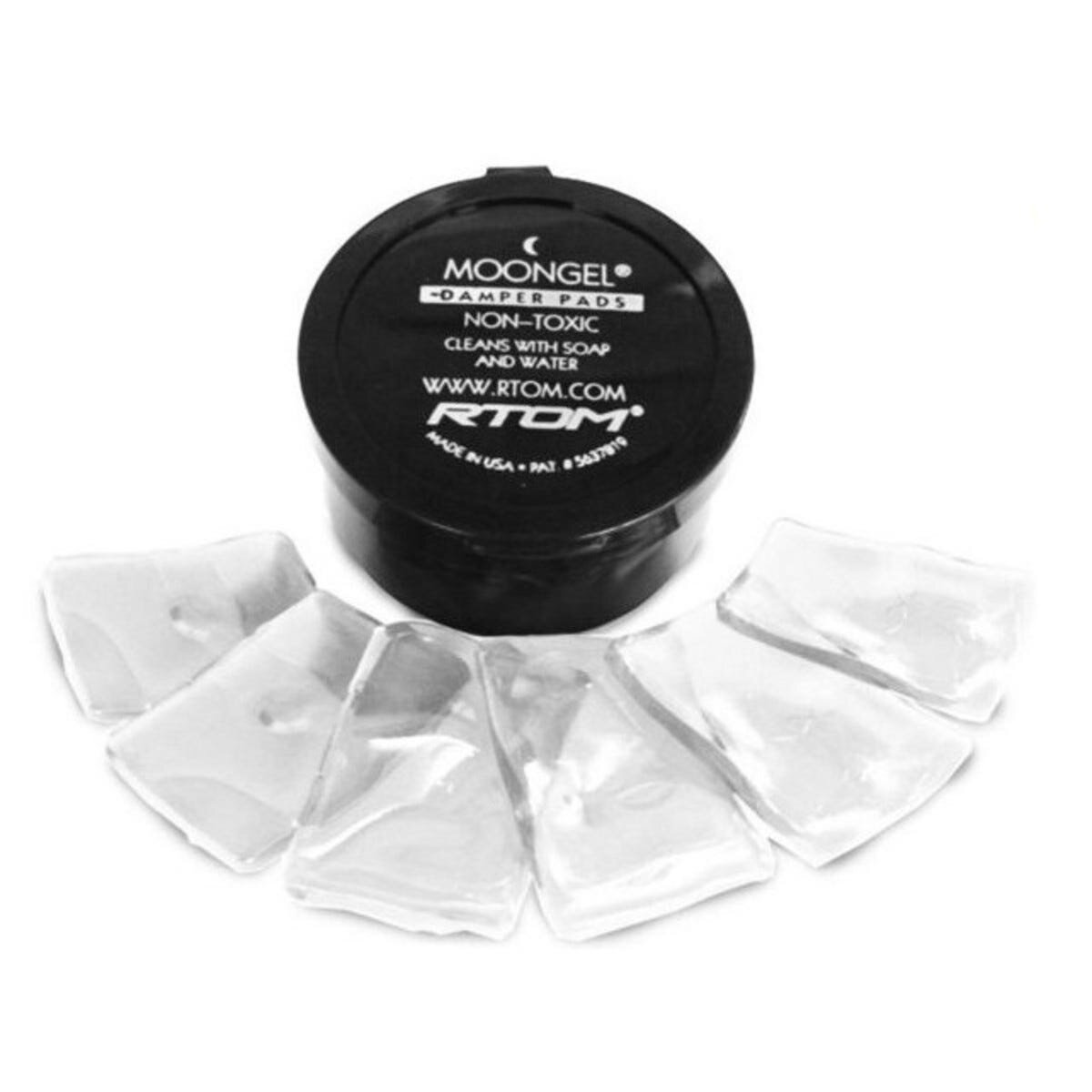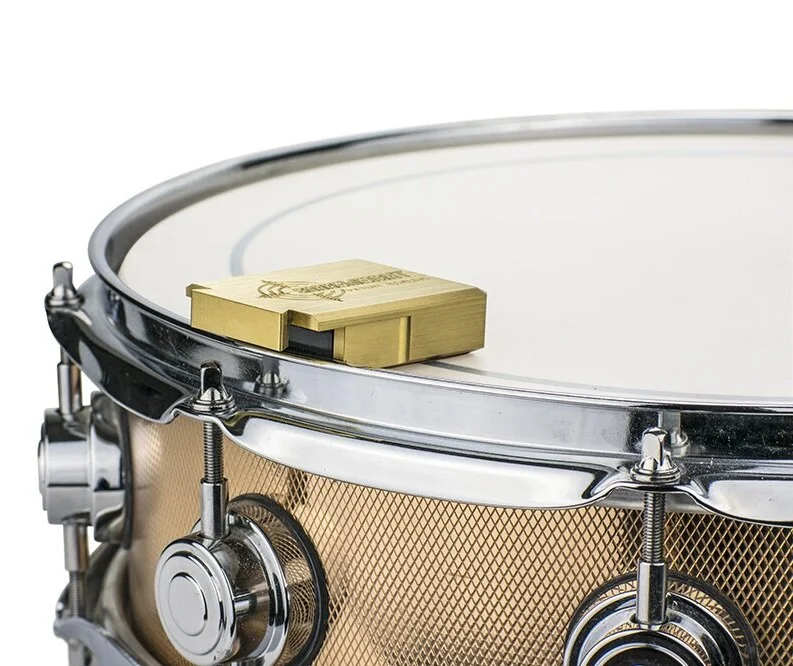DRUM MUFFLING FOR RECORDING
WHAT IS DRUM MUFFLING?
Simply put, drum muffling (or dampening) is adding something to the drum or drum head to change it’s sound in a certain way. Drum muffling is usually used to cause the following changes to the sound:
Decrease ringing
Decrease overtones
Decrease sustain
Decrease high frequencies
Decrease the tone of the drum
Decrease volume
In the recording studio we can use drum muffling techniques to create different effects to match the style and sound of the song.
It’s worth mentioning that muffling a drum should not be used as a substitute for good tuning. Even if we are going for a muffled sound, we should get the tuning of the drum right first.
DO I HAVE TO MUFFLE MY DRUMS FOR RECORDING?
Absolutely not! Sometimes the song will call for an un-muffled wide open drum sound. It all depends on the sound that you’re going for and what works in the context of the production. If you are going for a muffled drum sound though, there’s a few techniques we can use to get it. Some are commercial products and some are hacks using other items that you may already have laying around or are easy to find. Let’s start with the commercially available products.
BUILT-IN DAMPENING
The first type of dampening we will cover are drum heads that come with some sort of dampening manufactured into the head itself. These come in the form of control rings, centre dots or inlay rings.
These heads offer varying amounts of dampening depending on the size of the ring or dot.
Control rings are usually more effective in controlling overtones as they are closer to the edge, which is where the majority of overtones occur.
Heads with centre dots can give a more punchy, focussed sound and will also increase the durability of the head,
Inlay rings usually dampen less than control rings as they are only attached to the head at one edge and therefore allow it to vibrate more freely.
Heads that utilise a control ring include:
Evans EC2S
Remo Pinstripe
Aquarian Studio-X
Heads with a centre dot:
Remo Controlled Sound
Aquarian Power Dot
Evans Power Centre
EXTERNAL MUFFLING
The next range of products that we will cover are things that are added to the drum or drum head.
MOONGEL (OR SIMILAR)
Moongels are basically small silicon pads with a non-permanent adhesive on one side. They are designed to be stuck to the batter head of your snare or toms. They essentially add mass to the drum head, restricting it’s vibrations. This cuts down sustain and, in the case of the snare, it cut cut down or remove ringing overtones.
You can use a single piece for lighter dampening or add additional pieces to cut sustain and ringing even more. Typically the gels are placed in between the tuning lugs, towards the edge of the drum head. Moving the gel closer to the centre of the drum will effect more dampening.
The downside of Moongels is that they are relatively expensive for what they are. Luckily you can find an unbranded version of exactly the same thing on eBay. Just do a search for ‘Gel Pads Drums’ and you’ll find the same thing for about a quarter of the price.
MUFFLING RINGS
Muffling rings are made by all of the major drum head makers - Remo, Evans and Aquarian. Each company gives them a different name but they are essentially all a mylar ring about an inch wide cut to the diameters of common drum sizes.
Muffling rings are useful when slightly heavier dampening is required than that provided by gels.
One disadvantage of these rings is that they will sometimes vibrate against the head when it is hit, making a sort of flapping sound. Take care that this sound is not being picked up by the microphones when recording. A little bit of gaffer’s tape can be used to tape them down
These rings aren’t too expensive but if you do want to save some money and you have some old drum heads laying around you can make your own.
BIG FAT SNARE DRUM
Big Fat Snare Drum is a similar product to muffling rings but instead of just covering the outer edge of the drum, it covers the entire drum head.
This results in much more extreme dampening and as it adds a lot more mass to the drum head, the apparent pitch of the drum drops too, giving it a very deep, punchy sound. It’s a sound reminiscent of the 1970’s although that low-pitched snare sound is somewhat back in fashion lately.
It does reduce articulation a lot though so it’s probably not suitable if the drum part calls for a lot of ghost notes.
Again, you can make your own version of this by simply cutting up some old drum heads.
SNAREWEIGHTS
Snareweights are specialist products made for snare dampening. You can check out their website here
This one is designed to simulate the old trick of placing a wallet on the snare head (we’ll get to that one later). The advantage of these is that they come in different weights and materials depending on the amount of dampening that you want.
They are not cheap at all though, so you might want to experiment with making your own.
That just about covers the various types of commercially available products so let’s move on to ways we can dampen our drums for recording using other materials we might have laying around.
GAFFER TAPE
This one has to be number one, just because it’s such a mainstay in recording studios. It get’s used for just about everything. So how do we use it for muffling drums?
As with most of these options, using gaff to muffle a drum is simply about adding some extra mass to the drum head, which makes it harder for it to resonate. The best way I have found to use gaff is to rip off a piece about 5cm long, pinch it together in the middle creating a little tab and stick it onto the drum head. The tab allows you to easily remove or reposition it (see the image).
You can use a single piece or a few, depending on the level of dampening that you require.
When dampening a snare I will usually only use tape on the batter side head. With toms however, I find it can often be useful to put some tape on the resonant head too. This can cut down some of that after-ringing sound that sometimes affects toms. You can experiment with the positioning of the tape to find the ideal spot for the sound you want.
You can also use gaff to stick other things to the drum head to increase the effect. I will often fold up a few squares of toilet paper and gaffer tape it to the drum head.
COTTON BALLS
This little hack is specific to toms. Basically it involves removing the top head of the top and placing somewhere between 5 - 10 cotton balls (the type you probably have in your bathroom cabinet) into the top. The idea is that they sit on the resonant head on the inside. When the tom is struck they bounce up, allowing the tom to resonate. They they fall back down onto the resonant head dampening the sound and shortening the sustain of the drum. This one does work well but the downside is that it takes a little bit of experimentation to work out exactly how many you need to put in for a certain amount of dampening and each time you have to remove the top head, replace and retune.
SANDBAGS
Again, this one is specific to the floor tom. Basically it involves hanging a heavy sandbag on one or more of the floor tom legs. This has the effect of adding mass to the drum (not the head) and pushing it more firmly into the floor, thereby dissipating energy more quickly. This is quite a good one as it can be used to cut the length of sustain of the drum without reducing resonance.
GUITAR STRAP
No, I’m not kidding. This one is for the snare and it’s an idea that I stole from Eric Valentine, a producer I greatly admire.
Basically you need to find an old leather guitar strap, or one that has leather ends at least. Cut it about 10-15cm from the end and use a clip to attach it to the rim of the snare (see photo). The advantage of this over a gel or a ring is that as you strike the snare the leather lifts briefly off the head allowing it to resonate. It then falls back down, muting the drum.
Be careful when choosing the guitar strap that it doesn’t have any metal studs on it (although that could potentially be a cool effect, who knows?)
BASS DRUM
You’ll notice that all the techniques I have discussed so far have been focussed on the snare and toms. None of these techniques is really suitable for the bass drum, so let’s talk about that now.
Whereas the majority of muffling for snares and toms is external, it’s the reverse for the bass drum; we mostly use internal muffling to control resonance and sustain.
PILLOWS/TOWELS
Probably the most common and well-known method of muffling a bass drum is to place a small to medium-sized pillow inside the drum so that it is touching one or both of the heads. Be careful not to overdo it; ideally we still want to preserve some of the tone of the drum, whilst reducing its sustain and/or resonance.
FELT STRIPS
Felt strips are strips of felt about an inch wide that are installed on the inside when we mount the bass drum head. They are clamped in place by the hoops. The felt strip touches the back of the head, decreasing the sustain of the head. They can be used on the batter, resonant or both heads, depending on the sound and amount of muffling required.
EVANS EQ PAD (OR SIMILAR)
Essentially the Evans EQ pad is just a fancy pillow. It uses velcro to mount inside on the floor of the bass drum. It can sit against one or both of the heads to achieve different levels of muffling.
CONTROL RINGS
Similar to the built-in dampening for snares and toms, some bass drum heads are designed with control rings around the outer edge. The Evans EMAD heads come with two removable foam rings, one wide and one narrow. As they are located around the edge of the head they reduce overtones and result in a more focussed, punchy sound. Although they are available for both the batter and resonant heads, in my experience they are more commonly used on the batter head.
EXTERNAL MUFFLER
An external muffler for bass drum is a device that clamps onto the front side hoops. It has an adjustable arm with a small foam pad that presses against the resonant head, thereby reducing the sustain of the drum.
CONCLUSION
Whilst this is far from being an exhaustive guide, hopefully it has given some idea of the different types of muffling available. As always with all things sound-related it is subjective and the only way to find sounds that you like and that record well is experimentation. At Everland Studios we have plenty of experience with getting different sounds from drums. If you’re coming in for a recording session and you have a particular drum sound in mind please get in touch and we’ll work out how to get that sound.
I can also highly recommend the Sounds Like A Drum channel on YouTube, where they go into minute detail regarding tuning and muffling drums.








